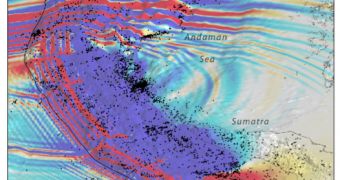According to the conclusions of two new studies by researchers at the United States Geological Survey (USGS), large earthquakes can significantly affect tremor patterns around the world, for several years.
The studies focused on the effects of the April 11, 2012, magnitude 8.6 earthquake that struck in the eastern Indian Ocean, and the magnitude 9.2 tremor that struck Sumatra in 2004, respectively.
While the former had relatively limited impact in terms of lives lost, the latter produced more than 230,000 victims, comparable to the 2010 tremor that struck near Port-au-Prince, Haiti.
The new studies show that global seismicity patterns are not a given, but rather a product of several influencing factors. Even large earthquakes do not influence distant fault lines in the same way.
Researchers say that each tremor cataloged as very intense is able to exert an influence on other fault lines. This influence is naturally stronger on nearby faults, and fades in intensity over distance.
What these studies provide is additional data on a very hotly debated topic in the international geological community, which is the origin and prevalence of remotely triggered earthquakes.
The first paper, entitled “The 11 April 2012 M=8.6 East Indian Ocean earthquake triggered large aftershocks worldwide,” appears in a recent issue of the top journal Nature. Its authors are USGS experts Fred F. Pollitz and Ross S. Stein, as well as USGS contractor Volkan Sevilgen.
The second paper, written by the same authors, is entitled “Stress imparted by the great 2004 Sumatra earthquake shut down transforms and activated rifts up to 400 km away in the Andaman Sea,” and appears in the latest issue of the journal Proceedings of the National Academy of Sciences.
“Earthquakes are immense forces of nature, involving complex rock physics and failure mechanisms occurring over time and space scales that cannot be recreated in a laboratory environment,” USGS Director Marcia McNutt explains.
“A large, unusual event such as the East Indian earthquake last April is a once-in-a-century opportunity to uncover first order responses of the planet to sudden changes in state of stress that bring us a little closer to understanding the mystery of earthquake generation,” she goes on to say.

 14 DAY TRIAL //
14 DAY TRIAL //